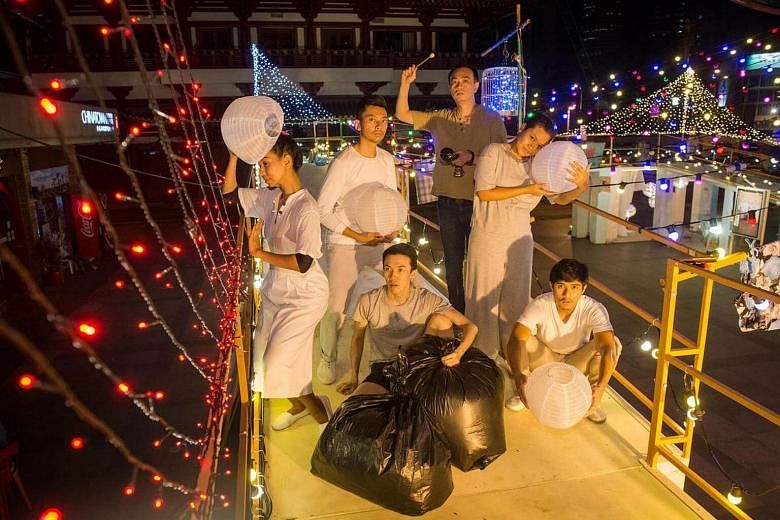A collaborative work among a Malay contemporary dance group, a physical theatre performer and an opera singer will bring to life the untold history of Chinese death houses in Sago Lane in Chinatown.
Dancer and artistic director of P7:1SMA Norhaizad Adam was inspired to create the work - titled Sago Lane - after listening to theatre actress Jalyn Han's stories about the death houses on the second floor of the shophouses on the street.
Norhaizad, 29, says: "Samsui women would go there to wait for their deaths because they had no one. The person running the funeral parlour below the death houses would bury them.
"This notion of waiting to die really resonated with us. It's not a comfortable topic to talk about, but we want to tap those dark feelings."
He will perform in the dance piece with his colleagues at P7:1SMA - Hasyimah Harith, 27, Md Hariz Bakri, 31, and Suhana Jumadi, 29.
Roving in the areas around the exhibition site, the dancers will take on the personas of people who lived in that era, such as labourers, rickshaw pullers, samsui women and amahs.
Opera singer Steven Ang, 36, got involved after offering to help the dancers with their questions about Taoist funeral rituals. His parents used to run a funeral store for 66 years, selling paraphernalia such as joss paper and joss sticks.
Ang, whose role in Sago Lane is akin to that of a priest, says: "This project gives me an opportunity to explore what shaped the beliefs and thoughts that have been passed down to our generation."
He will singand play instruments such as the Chinese temple block - a wooden percussion instrument known for its tok-tok sound - to create a ritualistic soundscape.
While the production has roots in a dark part of history, it will include a moment of playful interaction as the dancers meet a garbage man, embodied by physical theatre performer Lim Jun Jie, 28.
Lim is presenting a separate work titled Garbage Man, about the memories of a lonely character.
Despite the emphasis on the history and culture in Chinatown, the Malay members of P7:1SMA do not feel out of place. On the contrary, they found links to Malay culture in their research - such as the name Kreta Ayer, for example, which refers to bullock carts (or water carts).
Norhaizad says: "There's a Malay mosque nearby as well. Anyway, we'd rather do work about things that we don't know about. It's like a learning journey for us."

